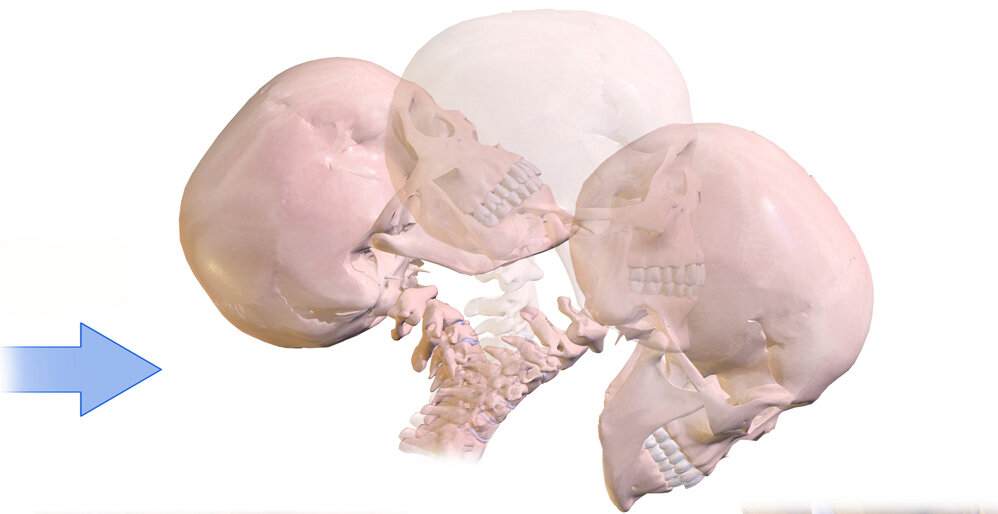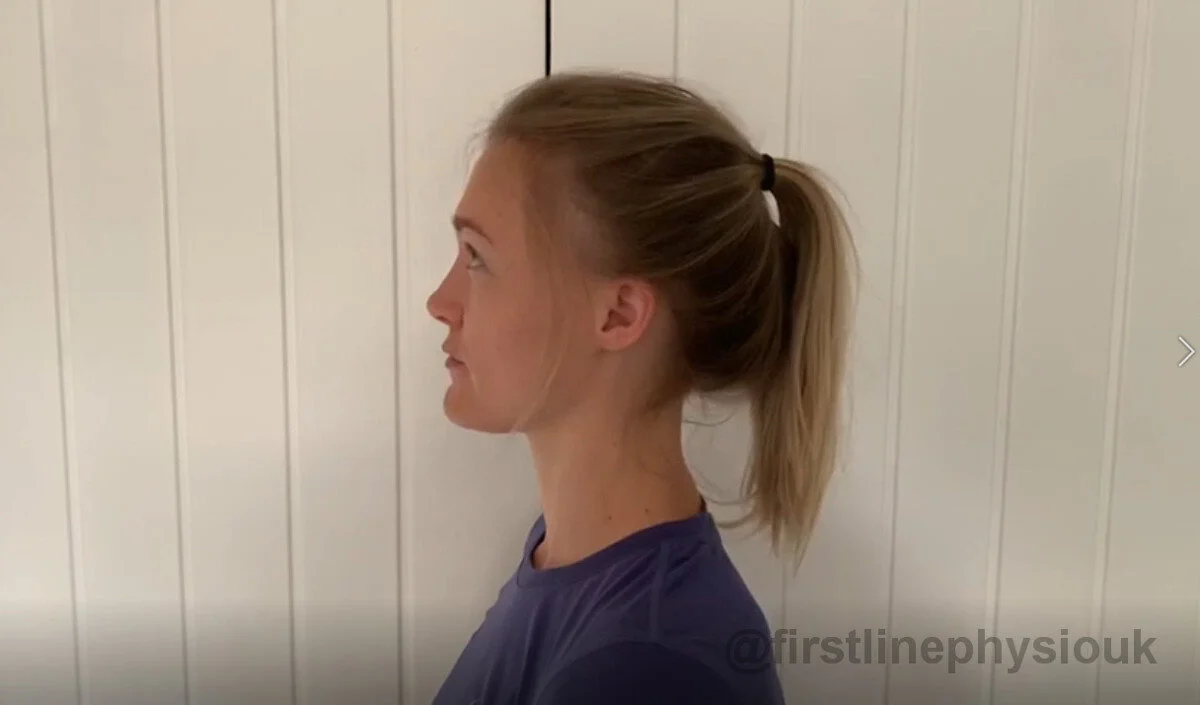What should I do about Whiplash?
Although whiplash it can be very painful initially, there is lots that you can do to improve the pain and stiffness in your neck. Here we will discuss what it is, how long it tends to last, and our top tips for improving your symptoms.
What is whiplash?
Whiplash or Whiplash Associated Disorders (WAD) refers to injuries to the neck as a result of a sudden acceleration - deceleration movement. It generally occurs when your head is thrown backward and then forward, quickly, unexpectedly and with a high amount of force.
Whiplash can cause neck and shoulder pain, stiffness, muscle spasm and headaches. There are 4 different types of whiplash, classified due to the severity of the injury:
1 - Neck pain, stiffness and tenderness only.
2 - Neck pain, stiffness and tenderness with reduced neck movement.
3. Neck pain, stiffness and tenderness with neurological signs (weakness/numbness, loss of reflex)
4 - Neck pain, stiffness and tenderness with fracture or dislocation.
Most whiplash injuries are Grades 1-2, and are considered soft tissue injuries (muscle and ligaments) without the evidence of a fracture. In this blog we will discuss treatment for these. Grade 3 and 4 whiplash will require a different course of treatment.
If you have experienced a whiplash type injury and have tingling, weakness or numbness in your arms or legs, problems with walking or sitting upright, make an urgent appointment with your GP or physiotherapist, as this is a sign that the nerves in your spine may have been affected.
What causes whiplash?
The most common cause of whiplash is road traffic accidents, which tend to be rear end or side impact from another vehicle. However, whiplash can be caused by lots of other activities, such as:
Contact sports such as rugby, football or boxing
Diving
Accidents with cycling or horse riding where the neck is jolted backwards
Falling where the head is jolted backwards
A blow to the head with a heavy object
Whiplash by BruceBlaus is licensed by CC BY-SA 4.0. Image has been cropped.
How long does whiplash last?
The amount of time it takes to recover from whiplash varies largely and depends on several factors. The severity of the impact, the age of the patient, any previous neck problems, stress and trauma can all play a huge part in the speed of the recovery.
Most cases of whiplash tend to get better within a few days or weeks. However, if treatment is not commenced early, the symptoms may persist.
Around 85% of patients with whiplash recover within 6 months. Approximately 25% of people will have mild ongoing symptoms (neck pain and stiffness).
If symptoms are still present after 3 months, then there is a high chance that you will have some ongoing symptoms for at least 2 years.
Car Accident by Junior Libby is licensed under CC0 1.0
Should I wear a neck collar for whiplash?
Neck collars are not something we advise for whiplash. These are designed to restrict movement in the neck in order to reduce pain. Although neck collars can provide some short term pain relief, they prevent movement in the neck, which can lead to further stiffness and muscle tightness.
There is plenty of scientific research that suggests early exercise is better then a neck collar in improving pain and movement. So instead of using a neck collar, we recommend trying the simple exercises below.
What is the best treatment for whiplash?
An important aspect of recovery with whiplash is to keep generally active, even if you have pain. If you have had time off, returning to work as soon as you are able has actually been found to be better for recovery. You don’t need to wait to feel 100% again to do this.
Walking and general activity such as gentle housework can be a good way to keep things moving without aggravating pain.
The important thing with most whiplash injuries is to start gentle neck movement exercises as early as possible. Although this can be painful at first, take it slowly and then pain should begin to settle as time goes on.
It’s important that you push very slightly into your pain limits every time, in order to improve the movement.
Move your neck slowly, and be mindful of the pain, but don’t avoid it. You will not cause yourself any harm by completing gentle exercises.
Pain does not mean damage in this case. It is your body’s way of reminding you that you have had an injury and to be careful, to protect you.
Exercises for whiplash
These exercises for acute whiplash (pain which has been present less than 3 months) are simple, and can be very effective. It can be helpful to start with completing these exercises little and often throughout the day, especially if you have a lot of neck pain.
If you have had a whiplash injury and have had neck pain for longer than 3 months, this is considered chronic whiplash. The exercises below may not be as helpful for you as you may need to stretch further in order to see improvements in your symptoms. Arrange to see a physiotherapist so they can assess what it is you need to work on.
Neck rotations
Sitting or standing and look ahead. Try to keep your shoulders relaxed.
Slowly turn your head to the side. Your eyes should follow the direction in which you are turning.
When you feel pain in your neck, pause for a couple of seconds, and then return to the middle.
Repeat to the other side. Aim for 5 times on each side.
Neck side flexions
Sitting or standing and look ahead. Try to keep your shoulders relaxed.
Slowly tilt your head and bring your ear towards your shoulder.
You should feel a stretch along the opposite side of your neck.
Hold for 5 seconds, then release and try on the other side.
Aim for 5 times on each side.
Neck flexions and extensions
Sitting or standing and look ahead. Try to keep your shoulders relaxed.
Slowly bend your neck forwards so that you are looking down to the floor. Pause here for a couple of seconds.
Then slowly look up to the ceiling, bending your neck backwards. Pause here for a couple of seconds.
Repeat 5 times.
Another great exercise, especially if you are experiencing pain into your shoulders, is slowly rolling your shoulders backwards repetitively for around 30-45 seconds. This helps the muscles around your neck and shoulders to relax.
Make sure that you move slowly with these exercises and try not to jerk into any of the positions. You may find that you have one direction that is more stiff and painful than the others. Move gently into the pain and try to focus on that direction a little more often. These exercises are likely to cause some discomfort, but you should not have any severe pain.
If you have not had improvements in your pain within a couple of weeks, it is worth going to see a physiotherapist. They can tailor an exercise programme to you and check for any other underlying problems. It may be that you need some massage into the neck muscles to encourage relaxation, or some gentle mobilisations on the joints in your spine to relieve stiffness.
This is absolutely not written to substitute medical advice and it is always important to see a qualified health care professional for a formal diagnosis. If the exercises cause pain during or after completion, discontinue and consult a physiotherapist.
If you would like to get in touch please visit our contact page.








